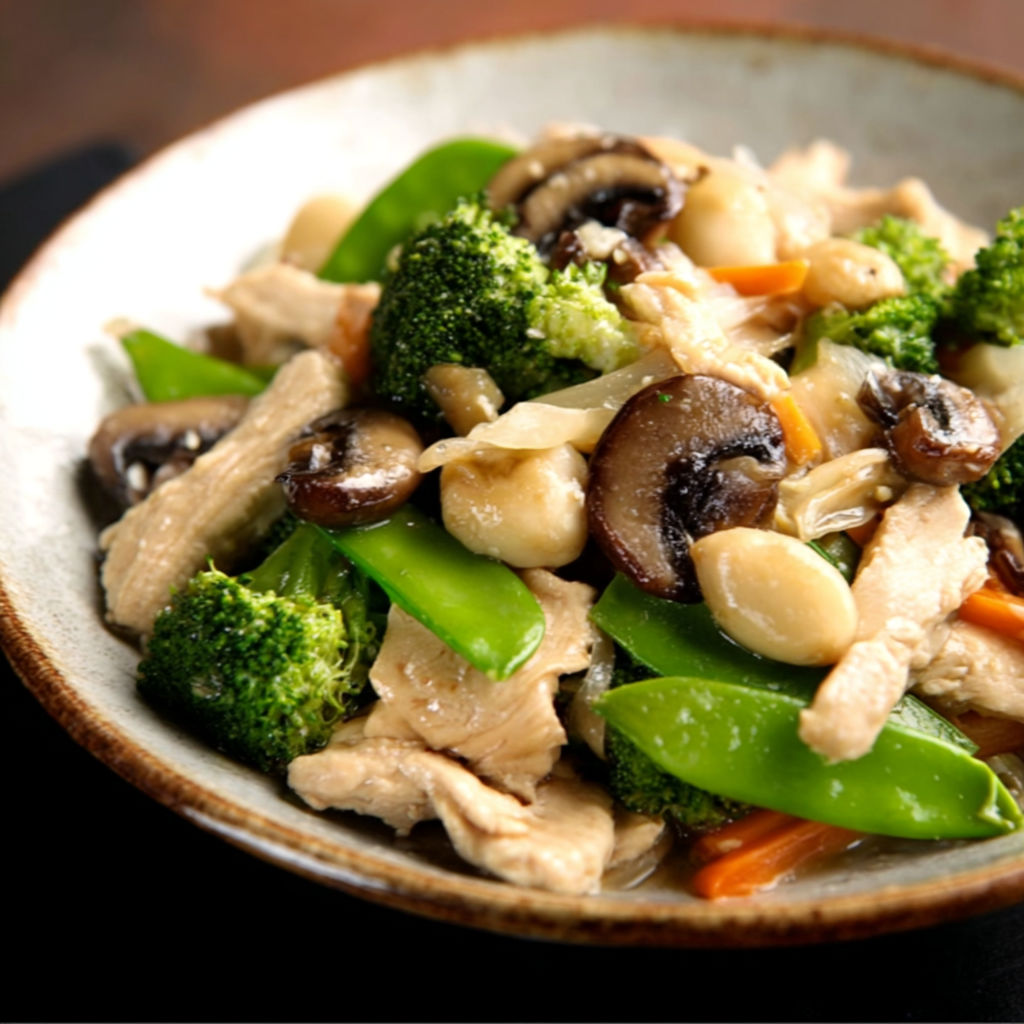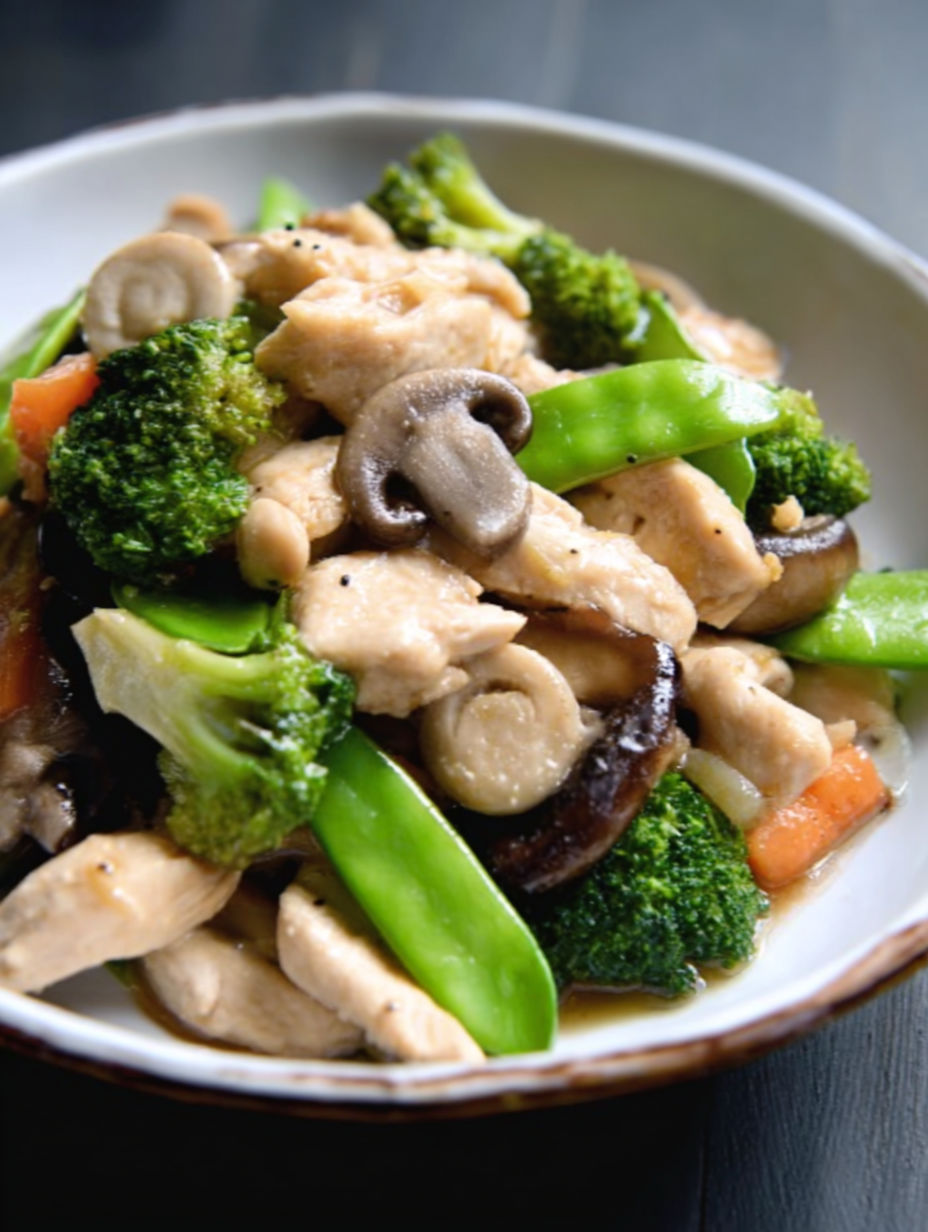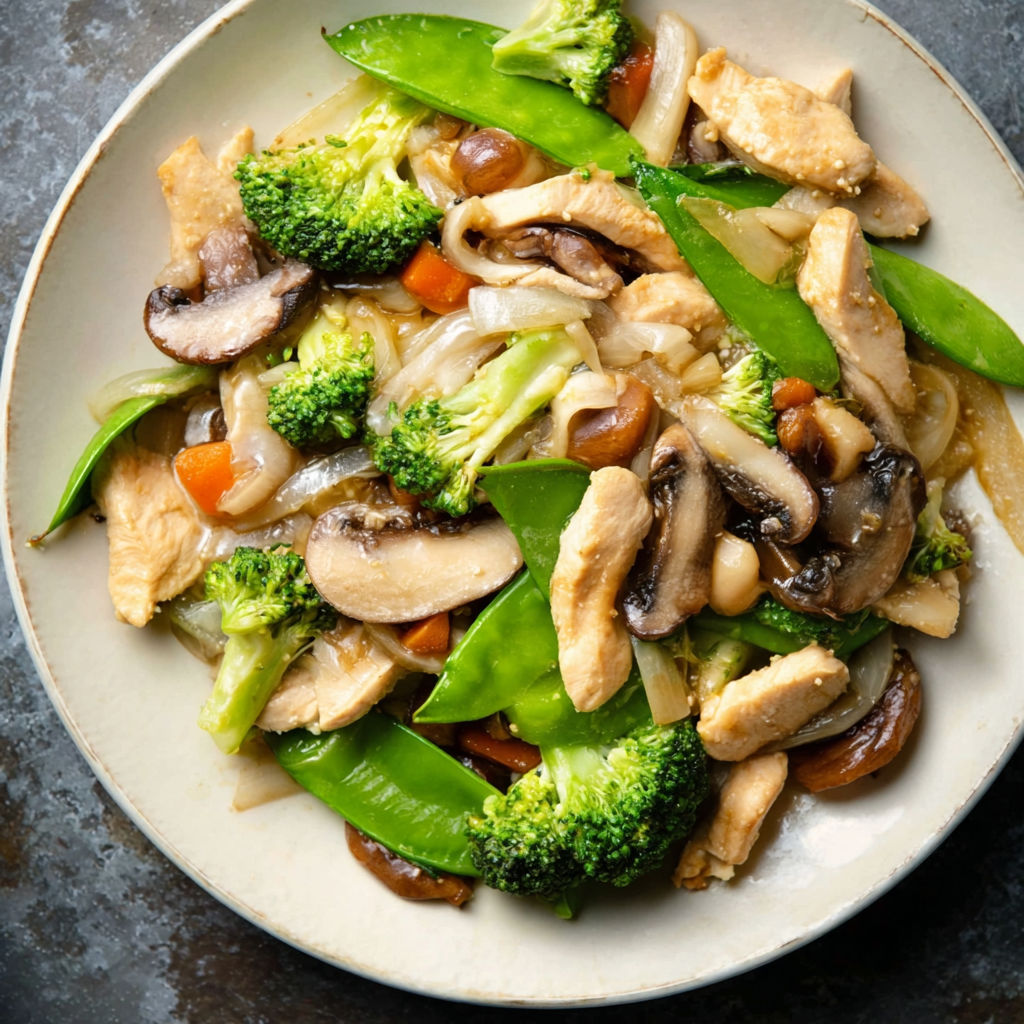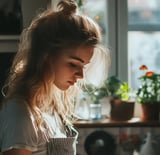 Pin
Pin
This traditional Moo Goo Gai Pan brings authentic Chinese restaurant flavors right to your kitchen. The delicate balance of tender chicken and crisp vegetables in a light savory sauce makes this dish both satisfying and nourishing. I perfected this recipe after countless attempts to recreate my favorite takeout dish, and now my family requests it over delivery every time.
I first made this recipe during a busy weeknight when I was craving Chinese food but didn't want to wait for delivery. The fresh vegetables and tender chicken were so much better than takeout that it's become our Monday night tradition to kick off the week with homemade Chinese food.
- Vegetable oil perfect for high heat cooking and won't overpower the delicate flavors
- Broccoli florets add nutrition and absorb the sauce beautifully
- Fresh mushrooms provide earthy flavor and meaty texture
- Straw mushrooms bring authentic restaurant style and unique texture
- Bamboo shoots add traditional crunch and mild flavor
- Water chestnuts provide signature crispness that stays crunchy even when cooked
- Garlic adds aromatic depth but use fresh for the best flavor
- Chicken breast the perfect lean protein that cooks quickly
- Chicken broth forms the sauce base use low sodium if possible
- Cornstarch essential for thickening the sauce to silky perfection
- Sugar balances the savory elements with just a touch of sweetness
- Soy sauce adds umami depth look for naturally brewed varieties
- Oyster sauce provides rich seafood undertones that define Chinese cooking
- Rice wine adds authentic flavor dry sherry works in a pinch
How To Make Moo Goo Gai Pan
- Prepare the vegetables
- Chop all vegetables into similar sized pieces to ensure even cooking. The broccoli should be in bite sized florets while mushrooms should be sliced about 1/4 inch thick. Drain all canned vegetables thoroughly as excess water will dilute your sauce.
- Stir fry the vegetables
- Heat your wok until it just starts to smoke before adding oil. This prevents sticking and creates that restaurant quality sear. Keep the vegetables moving constantly for even cooking and bright color retention. They should remain slightly crisp as they'll cook more when returned to the sauce.
- Cook the chicken
- Slice chicken against the grain into thin strips about 1/4 inch thick for tenderness. The quick cooking prevents dryness. When stir frying watch for the moment the chicken turns opaque with just slightly browned edges for perfect doneness.
- Create the sauce
- Mix all sauce ingredients before adding to the wok to prevent cornstarch lumps. The sauce will initially look cloudy but will turn glossy and clear when properly thickened. This transformation happens quickly so watch carefully and stir constantly.
- Combine everything
- When returning vegetables to the sauce toss gently but thoroughly to coat every piece. The final minute of cooking allows the flavors to meld without overcooking the vegetables maintaining their distinct textures and vibrant colors.
The bamboo shoots are actually my favorite ingredient in this dish. They remind me of my first trip to China where I learned that authentic Chinese cooking is all about balancing textures as much as flavors. My grandmother always said the secret to good Moo Goo Gai Pan is keeping everything crisp tender, never mushy.
Perfect Rice Pairing
White jasmine rice is the traditional accompaniment to Moo Goo Gai Pan. The fragrant, slightly sticky texture perfectly complements the light sauce. Cook your rice while preparing the stir fry so everything finishes at the same time. For a healthier option, brown rice provides nutty flavor and extra fiber, though you'll need to start it earlier as it takes longer to cook.

Making It Your Own
This recipe welcomes customization with whatever vegetables you have on hand. Snow peas, bell peppers, carrots, or bok choy all work beautifully. For protein variations, try using shrimp, thinly sliced beef, or tofu for a vegetarian version. The sauce proportions remain the same regardless of your protein choice, though cooking times may vary slightly. My husband prefers extra mushrooms while my kids love when I add snow peas for sweetness and crunch.
Cultural Background
Moo Goo Gai Pan originated in Cantonese cuisine, with the name literally translating to "mushrooms and sliced chicken." This dish represents the Cantonese cooking philosophy of fresh ingredients prepared simply to highlight natural flavors. Traditional versions focus on white button mushrooms, but modern interpretations include a variety of mushrooms and vegetables. In America, the dish evolved to include more vegetables than the original version, making it a healthier option on Chinese restaurant menus.
Leftover Magic
Leftovers store beautifully in airtight containers for up to three days in the refrigerator. The flavors actually develop overnight, making day-two Moo Goo Gai Pan sometimes even better than fresh. For reheating, a quick stir in a hot wok or skillet works better than microwave, preserving the vegetable textures. If the sauce has thickened too much during storage, add a tablespoon of chicken broth while reheating to restore its silky consistency.

Recipe FAQs
- → What does Moo Goo Gai Pan mean?
Moo Goo Gai Pan translates from Cantonese to English as 'mushrooms and chicken slices.' 'Moo goo' refers to mushrooms, 'gai' means chicken, and 'pan' means slices. The dish is named after its two main ingredients.
- → Can I substitute other vegetables in Moo Goo Gai Pan?
Absolutely! While traditional Moo Goo Gai Pan includes mushrooms, broccoli, bamboo shoots, and water chestnuts, you can customize it with vegetables like snow peas, bell peppers, carrots, or bok choy. Just adjust cooking times to ensure each vegetable reaches the perfect texture.
- → What's a good substitute for oyster sauce?
If you don't have oyster sauce, you can use hoisin sauce (though it's sweeter) or make a substitute by combining 1 tablespoon soy sauce with 1/8 teaspoon sugar. For vegetarian versions, look for mushroom-based oyster sauce alternatives at Asian grocery stores.
- → What type of rice wine should I use?
Chinese Shaoxing wine is traditional for this dish. If unavailable, dry sherry makes an excellent substitute. For a non-alcoholic option, you can use rice vinegar with a pinch of sugar or even apple juice, though the flavor profile will be slightly different.
- → Can I make Moo Goo Gai Pan ahead of time?
While best enjoyed fresh, you can prepare the components ahead of time. Cut all vegetables and chicken, and mix the sauce ingredients up to a day in advance. Store separately in the refrigerator. When ready to serve, stir-fry as directed for the freshest results. Leftovers will keep refrigerated for 2-3 days.
- → How do I get the perfect texture for the vegetables?
The key to perfect vegetables in Moo Goo Gai Pan is high heat and quick cooking. Stir-fry harder vegetables like broccoli first, adding softer ones later. The vegetables should be tender-crisp—cooked through but still maintaining some crunch and vibrant color.
